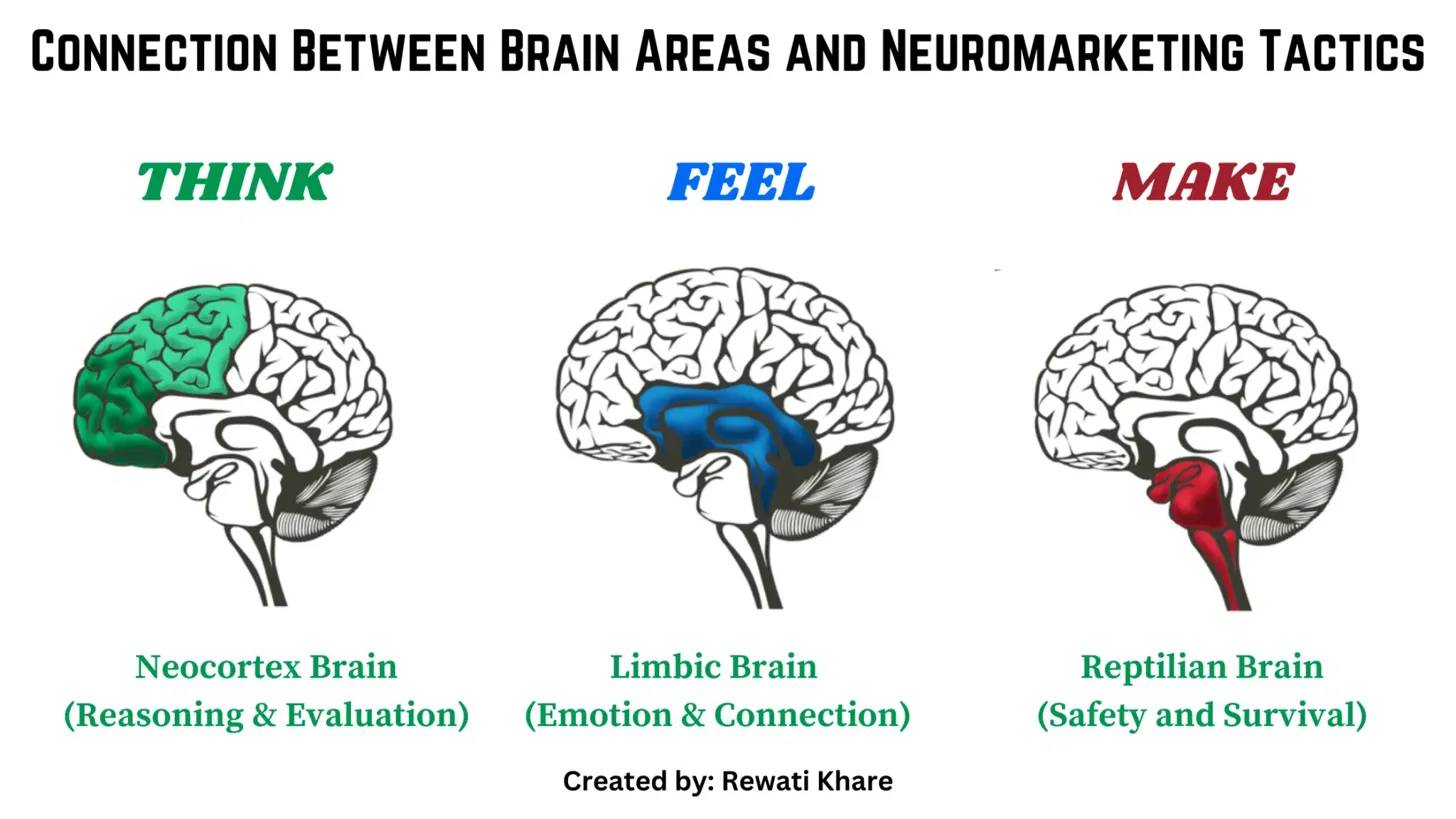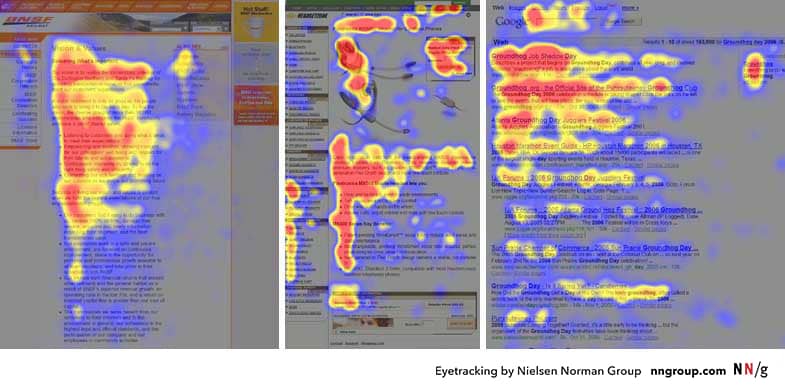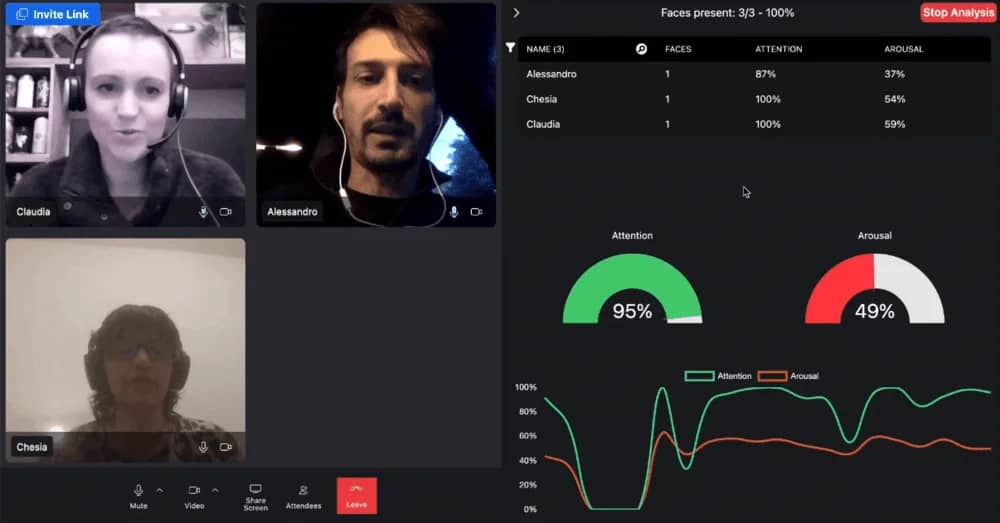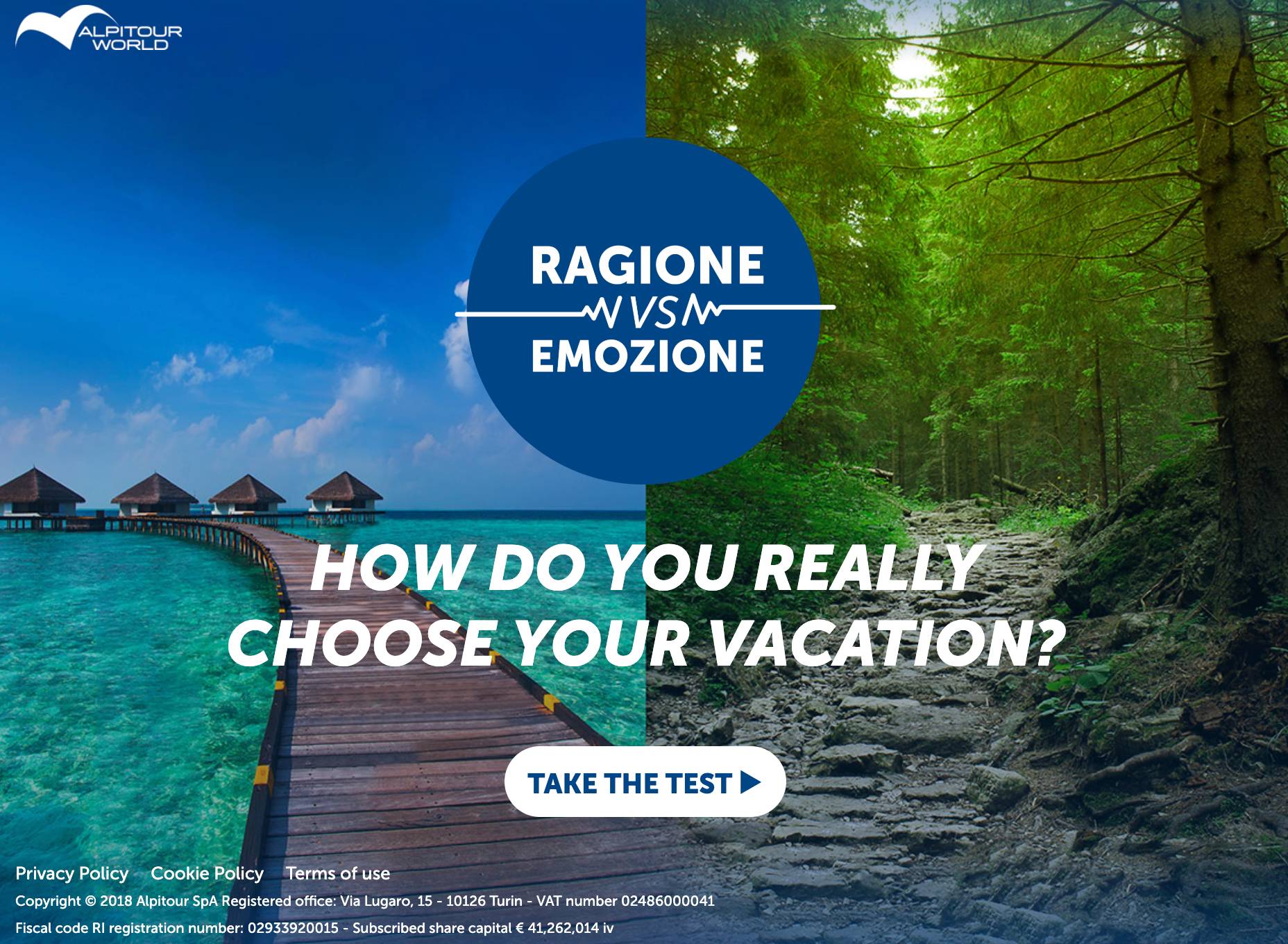Imagine knowing what triggers your prospects to say “yes” before they even realize it themselves, and how that would help your conversion rate.
That’s the promise of neuromarketing. It combines neuroscience with marketing strategies to learn how buyer behavior works, beyond what people claim in surveys and focus groups.
This guide explores neuromarketing from an SMB perspective, making it more accessible than ever. You’ll find a simple neuromarketing definition and practical ways to improve every interaction.
What is neuromarketing and how does it work?
Neuromarketing means learning how sales prospects make buying decisions by studying brain responses to marketing stimuli, then using those consumer preference insights to boost sales.
While traditional marketing research relies on self-reported data (e.g., customer surveys and focus groups), neuromarketing research goes deeper by using biometric tools to measure how the brain responds in real time. It’s more definitive and accurate as it gauges human brain activity that even buyers are unaware of.
Here are the most common neuromarketing techniques for SMB sales and what they assess:
Research method | What it measures and how marketers use it |
Eye tracking | Measures: visual attention patterns, pupil dilation. Use it to: optimize page layouts, ad placement and product packaging. |
EEG (electroencephalography) | Measures: brainwave patterns and electrical activity between neurons (i.e., neural activity). Use it to: track attention levels, emotional engagement and memory formation. |
fMRI (functional magnetic resonance imaging) – i.e., brain imaging | Measures: blood flow changes in specific parts of the brain. Use it to: identify areas activated by different marketing messages. |
Facial coding | Measures: micro-expressions and facial movements. Use it to: measure emotional responses to video content and commercials. |
Heart rate monitoring | Measures: cardiovascular responses to stimuli (e.g., increased or decreased BPM). Use it to: assess stress, excitement or calm triggered by marketing materials or sales tactics. |
Galvanic skin response | Measures: changes in skin conductance. Use it to: detect emotional intensity and subconscious reactions relating to marketing efforts. |
For example, if eye tracking shows that people spot red “Buy Now” buttons faster than other colors, you could use that color to speed up purchases.
If facial coding reveals that your ideal customers smile more during product demos, you could move those scenes to the start of a video to boost engagement.
How neuromarketing works: the science of consumer decisions
Modern neuroscience recognizes that consumer decision-making happens across three distinct brain systems: neocortex, limbic and reptilian.

The systems work together via networks of neurons to determine whether someone is ready to buy a product (or complete another action). Each one requires a different marketing approach:
The neocortex is rational. It handles logical evaluation and conscious decision-making. Target this area using detailed product specs, competitor or item comparisons and logical arguments tied to your value proposition.
The limbic system is emotional. It processes feelings, relationships and social connections. To trigger this system, focus on brand storytelling and emotional benefits. Build customer relations instead of highlighting features.
The reptilian system is instinctive. It makes fast decisions about safety, security and other immediate needs. Cater to it with urgency and exclusivity, and offer clear visual cues pointing to trustworthiness or risk as a reason to buy.
Strong neuromarketing campaigns address all three brain systems at the same time.
For example, a social media video ad might tell a heartfelt story (limbic), promote a limited-time offer (reptilian) and show clear product benefits. When all brain areas agree, people are more likely to buy.
Want to Learn How to Influence Your Prospect’s Buying Decisions?
Why neuromarketing matters for marketers and sales teams
Studying brain activity shows you which ads, headlines, product designs or prices trigger emotional reactions that contribute to conversions.
This insight matters for marketers and sales teams because up to 95% of buying decisions happen subconsciously, according to Harvard Business School Professor Gerald Zaltman.
However, emotion-led marketing does more than drive one-off purchases. It also helps build lasting customer connections.
Marigold marketing strategist Simon Jeffs explained in a DMA article how those emotional connections translate to long-term value for your business:
The window that neuromarketing gives you into consumer behavior helps you engage, nurture and sell more effectively than competitors who don’t use it. Ironically, that makes it a no-brainer if you have the right tools and methodologies.
3 practical ways to apply neuromarketing (no lab coat needed)
Not a neuroscientist? Not a problem. You can still apply some basic consumer neuroscience principles to future marketing campaigns.
Here are three simple ways to strengthen your decision-making process.
1. A/B testing for emotional framing
Split testing is an easy way to simulate neuromarketing insights. If a particular headline or image triggers more engagement, it probably resonates more emotionally, even if users can’t say why.
To take that idea further, frame one variation around logic and another around emotion. For example, try these taglines for a campaign promoting cybersecurity products:
Logical tagline | “Save 25% with annual billing” |
Emotional tagline | “Feel secure with year-round protection” |
Then, use your website analytics software to track which version drives more clicks or customer conversions and apply what you learn to future messaging.
In a sales CRM like Pipedrive, you can tag leads by campaign or message type to see which emotional framing converts best. The Campaigns and Smart Docs features help you tailor follow-ups based on those insights.
Campaigns makes it easy to craft the perfect follow-up emails. Design your own content, pick a template or upload HTML from another tool:

If your audience responds better to logic, use more product specs and tangible data in your content. If emotional variations emerge on top, focus on building and telling your brand story.
Alternatively, pitch a formal-looking font against a more playful one to see which gets the most clicks.
Top tip: As an intro to this type of marketing experimentation, check out our guide on AI A/B testing. You’ll find a simple step-by-step process for running your first tests along with a high-level definition.
2. Established eye-tracking principles for page layouts
Professional eye-tracking equipment costs thousands, but you can still apply established findings to improve your web page layouts.
Nielsen Norman Group research found that people often scan web pages in F-patterns or Z-patterns, focusing on upper-left areas first. Here are the results from one of its eye-tracking studies:

With that knowledge in mind, place key elements like headlines, CTAs and product visuals where customers’ attention naturally falls. Here’s how Contractbook’s homepage does it:

Notice the heading’s subtle alignment to the left, framed by a value proposition and two CTAs. The average visitor’s attention is most likely to go there, so Contractbook puts the most important elements right in front of them to increase engagement.
3. Facial expression analysis tools
Facial expression analysis helps marketing professionals understand how people react to content in real time, and it’s generally more accessible than other neurological research techniques.
Tools in this category use artificial intelligence (AI) to spot tiny changes in facial muscles that signal emotional responses. They can spot joy, surprise, confusion, frustration and most other reactions.
Use facial expression analyses to:
See how viewers respond to different ad concepts and roll out the most impactful version
Find confusing moments in your sales demos, so you can simplify them to reduce friction
Choose the most emotionally engaging thumbnail for your video content to boost views
For example, a sales webinar attendee raising their eyebrow could be showing interest. Another person curling their lip might show discomfort. Neither has to say a word because the software – trained on thousands of facial patterns to read emotions accurately – captures it all.
Popular facial coding tools include MorphCast, Realeyes, iMotions and Entropik, alongside many others. Here’s an example of MorphCast working in a Zoom call:

Accessible tech like the above empowers you to apply some of the same tactics as large, well-known brands, helping you achieve similar results without big-budget resources.
Real-world neuromarketing examples and studies
Many leading companies use neuromarketing techniques to test designs and make more fruitful business decisions. Here are three standout neuromarketing research examples to show what’s possible.
1. Coca-Cola vs. Pepsi: brand power on display
In one of the most famous neuromarketing studies, researchers used fMRI tech to measure consumers’ emotional reactions to samples of Coca-Cola and Pepsi.
The first test used unlabeled samples. Pepsi triggered stronger activity in the brain’s reward center, suggesting it was the favored brand.
In a second test using labeled samples, Coca-Cola activated the memory and emotion regions more intensely. Participants overwhelmingly preferred it.
These outcomes prove the value of a strong brand image. Brand associations live deep in the brain and can even override a product’s taste.
2. Hyundai: testing emotions with neuroimaging
Hyundai ran a neuromarketing study for its IONIQ 5 N vehicle to understand how people really feel about high-performance driving.
Drivers saw clips of the car in action while researchers tracked EEG brainwaves and heart rate data, looking for the moments triggering the most excitement.

The findings ultimately helped the automotive company’s marketers fine-tune their product content, emphasizing the sounds, speeds and sensations that sparked the strongest brain responses.
The neuromarketing campaign coincided with a 42% year-on-year spike in Hyundai’s US electric vehicle sales, hinting at the potential value of emotionally resonant marketing.
3. Alpitour: tailoring travel content to emotional reactions
In a trial titled “Ragione vs. Emozione” (Reason vs. Emotion), travel brand Alpitour used MorphCast’s facial coding tech to learn how people respond to different vacation offers.

Participants viewed destination ads on a web page while their facial expressions were analyzed through their standard webcam. The goal was to detect emotions like happiness, surprise or disinterest without needing any verbal feedback.
When viewers showed stronger emotional responses to specific destinations (like a beach scene or mountain view), the platform adjusted the content they saw to match the sentiment.
The experiment helped the travel agency personalize the holiday experience from the very first interaction. By observing natural emotional reactions, the company made it easier for customers to discover trips they truly connected with and were more likely to book.
Note: Experience Alpitour’s neuromarketing trial using this MorphCast demo. It’s in Italian by default, but you can change the language with Google Chrome’s translation feature.
Ethical considerations: how to use neuromarketing responsibly
The powerful field of neuromarketing raises important questions about consumer privacy and free will.
Some critics argue that accessing subconscious responses gives marketers unfair advantages over consumers’ rational decision-making processes. The truth is, it depends on how you apply it.
Responsible neuromarketing provides the data and sales outcomes you need without damaging trust. It focuses on accurately understanding customer needs, not exploiting psychological vulnerabilities.
The ultimate goal should be creating products and messages that genuinely serve people’s interests, not tricking them into unwanted purchases. It also means being transparent with customers about your neuromarketing methods and intentions.
For example:
Ethical neuromarketing | Unethical neuromarketing |
Using emotional insights to improve clarity, relevance and genuine engagement. | Using emotional triggers to manipulate people into buying things they don’t need. |
Being transparent about data use and getting clear permission before analysis. | Hiding data collection methods or tracking people without consent. |
Highlighting actual value and positive outcomes to support informed decisions. | Exploiting fear or insecurity to increase conversions. |
Avoiding tactics that take advantage of mental or emotional vulnerability. | Targeting vulnerable groups with high-pressure messaging (e.g., children, people in distress, etc.). |
That Hyundai IONIC 5 N study is a solid example of ethical neuromarketing.
With full consent, the brand used brainwave and heart rate data to learn what people found most exciting so it could better meet their needs.
Crucially, it made the methodology and outcomes public. It had nothing to hide.
A transparent, insight-led approach shows how neuromarketing methods can improve customer experiences without compromising trust or sparking a backlash. Learn all about neuromarketing best practices in the next section.
Key takeaways: 3 simple neuromarketing tips for getting started
Neuromarketing doesn’t need to be complex or expensive. Here are some low-cost, high-impact ways to get started.
1. For fast wins with minimal investment: lean on existing neuromarketing research
Neuroscientists have spent years laying the groundwork that you can tap into cheaply or for free.
Use reputable studies to inform your first neuromarketing campaigns. A few early results, even small ones, should build your confidence and show what’s possible.
Nielsen’s eye-tracking research is a strong starting point, as you can apply it to all forms of content design. Pay for a comprehensive report covering three studies across 13 years ($98 for an individual license at the time of writing) or check out the group’s blog posts for helpful summaries.
2. For a deeper understanding without drowning in jargon: read neuromarketing books
The best books on neuromarketing make a complex topic feel accessible – just like this Pipedrive guide, but with more depth.
Look out for titles offering lots of real examples and practical methods. They’ll help you understand and apply the psychology behind sales and marketing decisions without needing a degree.
Well-reviewed options to sound out first include Neuromarketing by Leon Zurawicki, Buyology by Martin Lindstrom and The Buying Brain by A.K. Pradeep.
3. For neuromarketing on a small-business budget: choose free neuromarketing tools
Try marketing tools with neuromarketing features to build knowledge and get quick results. All of the following offer free plans, trials or both:
Hotjar. Track where people click and scroll on your site using heatmaps and session recordings. This tool is great for seeing where layout issues cause friction in the buyer journey. A free tier lets you track up to 35 daily sessions.
CoolTool. Test ad concepts, packaging designs and more on real viewers with easy-to-use eye-tracking, facial coding and survey functions. Reviewers describe a limited free tier, alongside paid plans for more advanced features.
MorphCast. Analyze emotional engagement through standard webcams when viewers watch videos or visit landing pages. A “Freepium” model offers full-feature access for limited periods.
For deeper insights, use Pipedrive’s Web Visitors add-on or connect tools like Hotjar to Pipedrive. Match webpage behavior with CRM activity to see what leads do before and after converting.
Here’s how Web Visitors presents recent site traffic:

Once you’ve earned a few data-informed wins, you’ll have a strong case for investing in more advanced neuromarketing technology.
Final thoughts
The sooner you understand how your audience thinks, feels and decides, the sooner you can stop guessing and start truly connecting.
Neuromarketing provides that understanding, and as this guide shows, it doesn’t have to be complex or costly. With the latest tech and a little creativity, you can win more business with science – just like the Coca-Colas and Hyundais of this world.
Tools like Pipedrive make it easy to turn neuromarketing insights into action. Start tracking behavior, optimizing your messaging and aligning lead gen and nurturing with real sales results for meaningful impact.









